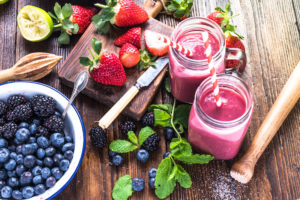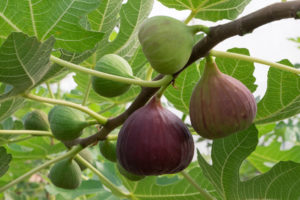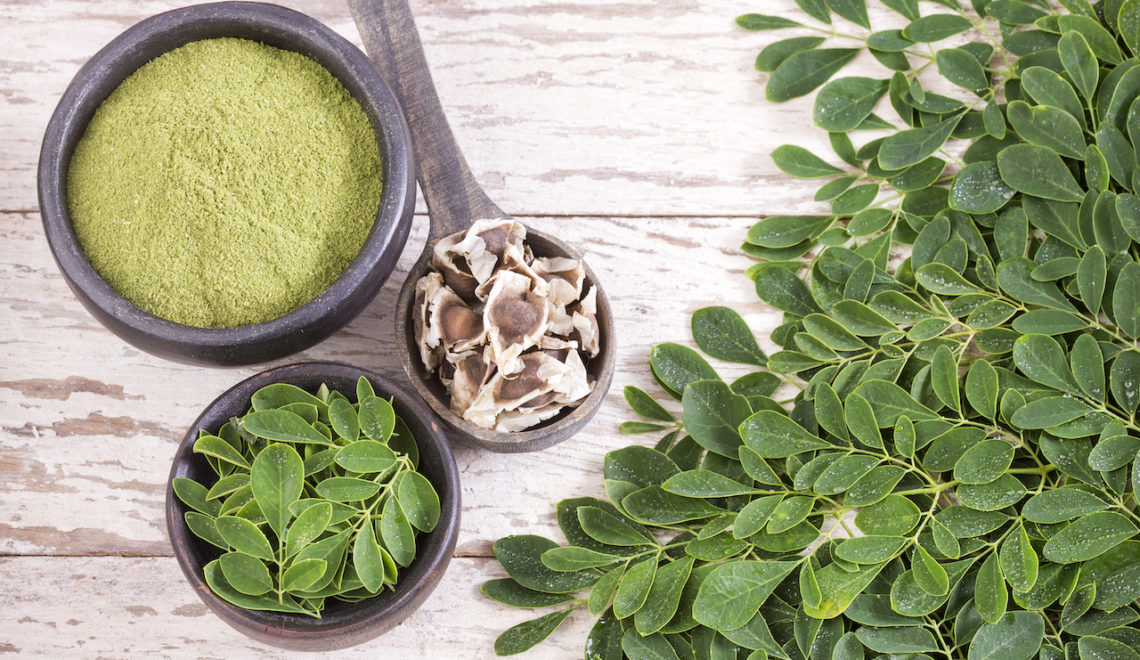If you could take a magic pill to achieve great health, you would, right? That’s a no-brainer. While there’s nothing spellbinding about what we eat, some foods benefit our well-being, and you can plant them right in your backyard. Superfoods are nutrient-rich foods that are considered especially vital for health and wellness, often because of their antioxidants, fiber, vitamins, and more.
Here are eight superfoods you can easily grow for your table. From blueberries to leafy greens, to garlic, there are lots of good options for planting your future meals. Enjoy!
1. Blueberries
These small, round berries are about as close as you can get to a super health pill. They’re packed with antioxidants and high in vitamin C and potassium. The little blue orbs help lower blood pressure, manage diabetes, and protect against heart disease and cancer. They also aid in healthy digestion. Blueberries grow on bushes and do best when planted in early spring. There are several varieties, some of which grow in colder climates, but they thrive in full sunshine.
2. Dark, Leafy Greens
You’ve likely heard that kale is good for you, but other superfoods that fall into this category include chard, collards, spinach, and romaine. Dark greens offer fiber, carotenoids, and folate, as well as vitamins C and K, iron, and calcium. Research shows eating dark leafy greens may lower the risk of stomach, breast, and skin cancer.

Make a #mymoringasmoothie with your greens!
They help ward off heart disease and protect bones from osteoporosis. They also make great smoothies! These vegetables grow best in rich, loamy soil with plenty of organic matter. They are cool-weather crops that thrive when soil temperatures are between 50 and 80 degrees.
3. Beets
Beets may be a bit of a newcomer to the superfoods list, but they definitely belong! This red root vegetable fights heart disease and high blood pressure and improves circulation and cognitive function. Beets are chock-full of nutrients including calcium, iron, and potassium, along with five essential vitamins. Beets grow underground.
They don’t take up much space in your garden and prefer partial shade and well-drained soil. There are many varieties of beets, and you can eat both the top leaves and the thoroughly washed bulb (root).
4. Sweet Potatoes
The sweet potato is another root vegetable — starchy and sweet-tasting. Despite the name, sweet potatoes and white potatoes are not part of the same family of plants. To make things more confusing, yams are often called sweet potatoes, but yams are in a third plant family. They yam what they yam.
But returning to sweet potatoes: These colorful lumps (usually orange but also yellow and purple) are a rich source of vitamins B and C and fiber. Sweet potatoes are also high in beta-carotene, which the body converts to vitamin A, which benefits the eyes. When adding them to your garden, keep in mind they do best in a sunny space. They’re a warm-weather crop and can grow in fairly poor soil. In cooler climates, it’s best to cover rows with black plastic to keep the soil warm. Sweet potatoes are extremely temperature-sensitive, so wait three to four weeks after the last frost to plant them.
5. Pumpkins
Pumpkins are so much more than a Halloween decoration. This superfood is full of vitamins A, C, E, and B2. Pumpkins also contain iron, potassium, manganese, protein, and fiber. Their seeds are super as well — edible and nutritious. With a high number of antioxidants, pumpkins can help reduce the risk of cancer, and heart and eye diseases.
They also boost your immune system and fight infections. The pumpkin is a hardy crop that can do well almost anywhere. Wait until after the last frost and sow the seeds in a sunny spot. The vines can sprawl quite far; keep that in mind when you’re deciding how much garden space you’ll need.
6. Figs
Figs are one of the oldest superfoods on the planet. Native to the Middle East and the Mediterranean, the fig tree dates back to the earliest historical documents.
These soft, chewy fruits with crunchy seeds are rich in fiber. Figs also contain calcium, magnesium, and iron along with vitamins A and K. The tiny fig helps lower blood pressure and aids in digestion. The trees do best in warm weather but can also be grown in temperate climates. In areas with long, hot summers, plant the tree in early spring or late fall.
In colder weather, use a container, keep it in full sun, and move it indoors when temperatures fall. There are lots of ways to great creative with figs, whether making a sweet fig spread with crackers, or making a fig and goat cheese salad.
7. Apples
The old adage about apples keeping the doctor away is true. We’ve known for years that this fruit has an impressive array of health benefits. Apples contain fiber, potassium, and vitamins A, B, K, and E. This tasty fruit lowers your risk of heart disease, stroke, and diabetes.
Apples act as a prebiotic and feed the healthy bacteria in your gut. You don’t need acres of land to grow apple trees. Dwarf trees can grow in a small space. This hardy tree grows in all temperate climates and actually does best where it gets cold in the winter. The trees planted in full sun bear the most fruit.
8. Garlic
It may not do much for your breath, but garlic does a lot for your health. It smells good, tastes good, and has been around for thousands of years. It provides protein to your diet, along with vitamin C, the B vitamins, folate, calcium, and zinc. It can also boost your immune system, purify your blood, help prevent heart disease, and act as an antibiotic. Garlic is easy to grow and doesn’t need much space. Plant it in fertile, well-drained soil. Too much water near the roots can cause them to rot.
To Superfood or Not to Superfood?
Eating superfoods won’t singlehandedly cure disease, but a balanced diet including them can set you on the path to prevention and may even keep doctor visits to a minimum. Include most or all of these plants in your weekly meals for the variety you need.
Moringa is a great superfood to grow in your backyard too, and grows best in a warm, dry climate. Any tips on growing your own moringa tree? Check out our article dedicated to Growing Your Own Moringa Tree for insight on growing a healthy moringa plant.
Any superfoods you want to see added to this list? What’s growing in your garden? Let us know in the comments below!
Don’t forget to tag @kulikulifoods in any social media posts you share so we can see your superfood recipes!











